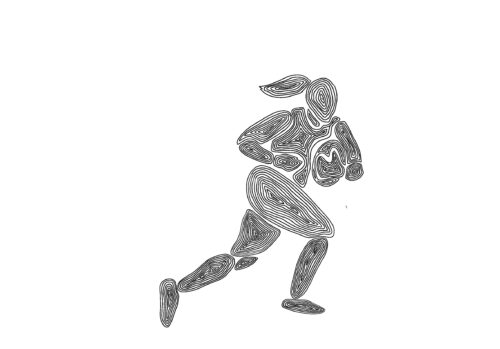Last Friday, after the Harvard Women’s Rugby team tackled, blocked, and ultimately beat Sacred Heart University, they serenaded their opponent with a song that both uplifted their rivals and promised future scrimmages: “here’s to Sacred Heart, we will play you ever more.” This scene encapsulated the spirit of the team, one that balances tackling and singing, tenacity and camaraderie.
Harvard’s 27-5 defeat of Sacred Heart coincided with the 50th anniversary of the passage of Title IX, the act which prohibits sex-based discrimination in activities receiving federal funding. The continuation of the team’s winning streak on a historically salient day reminded players and spectators alike of the inroads the women’s team has made in recent years.
40 years ago, women fought for entry onto Harvard’s rugby pitch. Now, they are leaders in that arena. “In a world where you’re used to the men being in the spotlight, it is the Women’s Rugby team who are dominating out there,” said team member Lennox London ’26.
The players credit this success to sport’s distinctly physical nature. Many other female sports, compared to their corresponding male leagues, impose restrictions on the level of permissible physical interaction between opponents. Rugby, however, allows full contact. It allows women to display aggression and develop strength often associated only with male sports and athletes.
Team captain Alex Pippin ’23 was encouraged to start playing rugby after accumulating many yellow cards playing soccer. Meanwhile, London tried out lacrosse and co-ed football before finding rugby. She found tackling incredibly empowering and discovered that “women are a lot stronger than they think they are.”
At Harvard, individual strength and respect for teammates develop in tandem. According to Pippin, the physical contact in rugby automatically gives players respect for the power of both their teammates and opponents. This mutual esteem is also rooted in the legacy of Women’s Rugby at Harvard.
After meeting the founding members of the Harvard Women’s Rugby team at the team’s 40th anniversary last week, Pippin said, “Rugby culture here is very much grounded in gratitude and knowing that everybody fought to get to the point where we have this beautiful pitch… and amazing resources.”
The players are translating this gratitude into empowering other young women to enter the sport, a number of whom approached the players after their game eager for autographs. “The women do a better job of lifting each other up because there’s less opportunities for women to play rugby,” said Pippin.
Cassidy Bargell ’23, a scrumhalf on the team, agreed that the intimacy of the community fosters bonds between teams. “You make friends anywhere you go playing rugby,” she commented.
Unlike other sports which often prescribe the body type necessary to be a top player, rugby teams encourage diversity in body size, strength, and agility, creating a culture which appreciates and respects difference. In some sports, “everybody kind of has to be built the same way, or think the same way to be good,” Pippin said. “You can’t have that in rugby. You have to respect people who aren’t like you and people have to respect you for what you bring to the table.”
The inequality which necessitated Title IX is still felt by the players on the team today. Pippin noted that until the number of female rugby players equals that of men’s teams, there will still be a gender gap in the sport. Despite this, the Harvard Women’s Rugby team has turned past inequities into fuel for a thriving team culture. Their ability to pair ferocity with mutual admiration is inspiring not only to budding players, but to women’s athletics at large.
Kate Kadyan ’26 (katekadyan@college.harvard.edu) writes Sports for the Independent.

